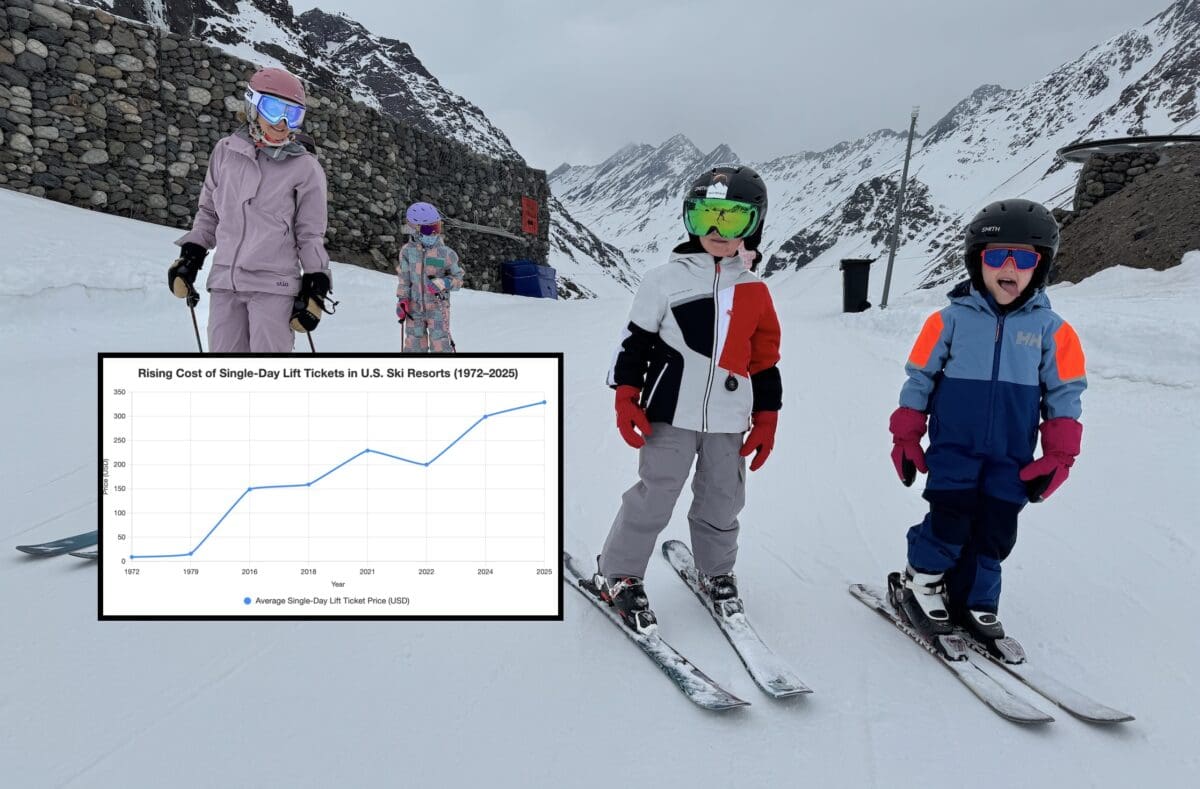Why Hitting the Slopes Is Breaking the Bank
Skiing has long been a beloved winter pastime in the United States, drawing skiers and snowboarders to the slopes of resorts like Vail, Aspen, and Deer Valley. But if you’ve hit the mountains recently, you’ve likely noticed a gotten quite a bit more expensive in the past decade. These dramatic increases impact not just day visitors but also vacationers looking to enjoy longer stays and locals who call mountain towns home.
A Steep Climb: The Rising Cost of Lift Tickets
The most tangible indicator of skiing’s growing expense is the cost of a single-day lift ticket. Back in 1972, a day at Vail cost just $9. By 1979, Aspen’s lift ticket was $16. Fast forward to 2025, and a single-day ticket at Vail or Beaver Creek can set you back a jaw-dropping $329 during peak season. That’s a 3,600% increase from 1972!
To illustrate this trend, check out the chart below, which tracks the average single-day lift ticket prices at major U.S. ski resorts from 1972 to 2025:

The chart paints a clear picture: lift ticket prices have surged, especially in the last decade. In 2016, Aspen’s peak-season ticket was $149. By 2021, Deer Valley was charging $229, and in 2024, that same resort hit $299. For 2025, Vail Resorts has pushed prices even higher, with some tickets reaching $329. These price points unequivocally demostrate the cost of skiing has been rising, reshaping how skiers and snowboarders plan their trips.
Why Are Skiing Costs Soaring?
Several factors are driving this upward spiral:
- Industry Consolidation: Major players like Vail Resorts and Alterra Mountain Company now control a significant share of top U.S. ski resorts. Vail Resorts, for example, owns 41 resorts, including Vail, Breckenridge, and Park City. This consolidation allows them to set premium prices, especially at flagship destinations.
- Rising Operational Costs: Resorts face hefty expenses, from snowmaking and grooming to liability insurance and labor. Climate change has made snowmaking more critical, with resorts like Snowbird spending millions on advanced systems to ensure consistent snowpack.
- Dynamic Pricing and Mega-Passes: Resorts increasingly rely on dynamic pricing, where ticket prices fluctuate based on demand, much like airline tickets. Meanwhile, season passes like the Epic Pass and Ikon Pass encourage early commitment but leave day-trippers paying a premium. For example, an Epic Pass in 2022 offered a day at Breckenridge for as low as $104 if purchased early, compared to $200 for a walk-up ticket.
- Luxury Positioning: High-end resorts are leaning into a luxury experience, with upscale amenities like slope-side dining and heated lifts. This caters to wealthier skiers but alienates budget-conscious visitors.
Beyond Lift Tickets: The Full Cost of a Ski Day
Lift tickets are just the start. A ski trip involves a slew of other expenses that have also climbed:
- Lodging: A night in a ski town can range from $70 for a budget motel to $2,750 for a luxury slope-side condo in places like Aspen or Jackson Hole.
- Gear Rentals: Skis, boots, and poles cost $25–$125 per day, depending on the resort and equipment quality.
- Lessons: A private ski lesson runs $80–$150 per hour, with group lessons slightly cheaper.
- Food and Drinks: A quick slope-side lunch averages $10–$25, while après-ski drinks can easily add another $10–$20 per person.
Add it all up, and a single day of skiing for a family of four can easily exceed $1,000, especially at premium resorts during peak season.
The Future of Skiing Costs
The trajectory of ski prices suggests no slowdown. With resorts investing in high-tech snowmaking, expanded terrain, and luxury amenities, costs will likely continue to climb. Climate change also poses a challenge, as shorter seasons and unpredictable snow could push resorts to raise prices to offset losses. Meanwhile, the dominance of mega-passes may continue to shift the industry toward rewarding loyal, high-spending customers while pricing out casual skiers.
Final Thoughts
Skiing in the U.S. remains a wonderful experience, but the rising costs are making it feel like a luxury rather than an accessible sport. The chart above shows just how dramatically lift ticket prices have grown, reflecting broader trends in the industry. By planning ahead, choosing budget-friendly resorts, and leveraging passes, skiers can still hit the slopes without breaking the bank. But as prices continue to climb, it’s worth asking: will skiing remain a sport for everyone, or become an exclusive playground for the wealthy?
Have you noticed the pinch of rising ski costs? Share your tips for affordable skiing in the comments, or let us know your favorite budget-friendly resorts!

